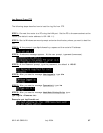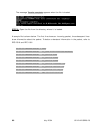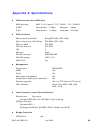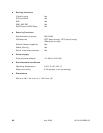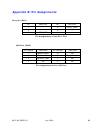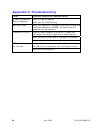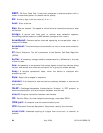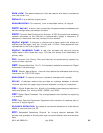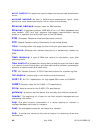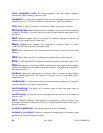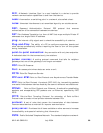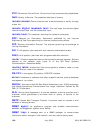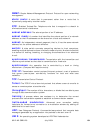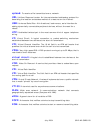96 July 2004 6212-A2-GB20-20
error control: An algorithm used to detect and correct data transmission
errors.
errored second: An item in performance measurement report, which
pertains to a one second period with one or more errored blocks.
Ethernet address: Another name for MAC address.
Ethernet: A standard protocol (IEEE 802.3) for a 10-Mb/s baseband local
area network (PAT) bus that supports high-speed communication among
systems. It operates at the Physical Layer of the OSI Model.
ETSI: European Telecommunications Standards Institute.
FCC:
Federal Communications Commission of the United States.
filter: A configuration that stops the flow of certain types data frames.
firmware: Software that has been temporarily or permanently loaded into
ROM.
flash memory: A type of RAM that retains its information, even after
powering-down.
flow control: A process that uses buffers to stop and start the flow of data
in a network to avoid losing data, and allow devices with different transmission
schemes to communicate with each other.
FTP: File Transfer Protocol. A TCP/IP standard protocol for transferring files.
full-duplex: transmitting in two directions simultaneously.
G.991.2: An ITU-T specification for high speed DSL known as G.SHDSL.
G.DMT: Another name for the G.992.1 ITU specification.
G.lite: Another name for the G.992.2 ITU specification.
gateway: A communications device that connects two different networks.
header: The beginning of a frame or cell that contains management and
addressing information.
hop: One point-to-point transmission in a series required to transmit a
message between two hosts in a network.
host: An addressable computer connected to a network.
hub: A device that serves as the central location for attaching wires form
workstations.



